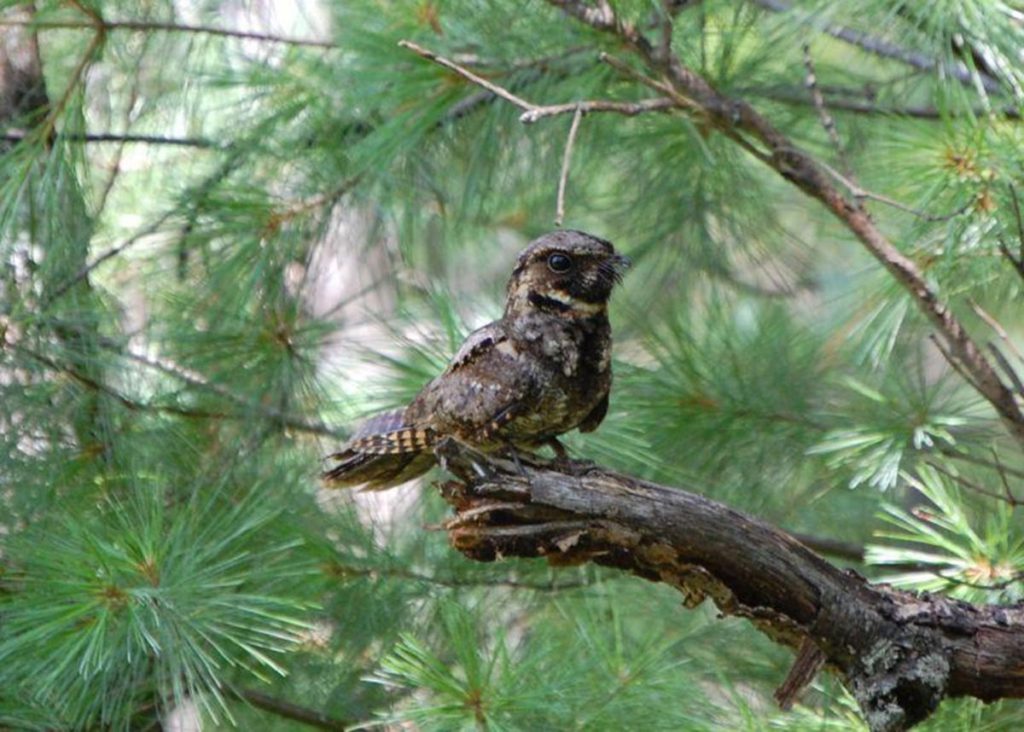Back Home by Chris Hardie
» Download this column as a Word document
» Download photo that accompanies this story
» More columns by Chris Hardie
» Chris Hardie’s headshot
A gentle breeze brings a draft of cool night air into the house as the sun settles below the western hills. Crickets begin their nightly chorus as fireflies flit along the creek bottoms.

It’s a summer evening on the farm and dusk settles on the valley. Just as darkness falls the maestro of the night orchestra warms up.
“Whip-poor-will. Whip-poor-will.”
Nothing says summer nights more to me than the call of the whip-poor-will, which instantly takes me back to my childhood and listening to the bird as I drifted off to sleep. It was the whip-poor-will that greeted Sherry and me back home a few days after we moved to the farm in 2006.
We were sitting on the porch at dusk listening to the gobbles of turkeys settling in for the night and singing frogs from the creek. An owl hooted. And in the distance, we heard the voice of the whip-poor-will.
“Welcome home, welcome home,” the bird sang.
Sadly the whip-poor-will population has been on a constant decline, along with the nighthawk. Both are members of the nightjar family. The Wisconsin Bird Conservation Initiative and other wildlife partners have coordinated an annual survey to collect data to better understand the secretive bird.
The 2019 survey recently finished. The 2018 results showed there was no halt or reversal in the decline of the population.
The survey says the population is stronger in sand country and may not be declining as much in the Driftless Area. My Jackson County farm is located just west of the Central Sand Plains and is part of the Driftless Area, so the habitat apparently is favored by the birds.
The population decline is attributed to less open forest favored by the birds. Invasive species such as honeysuckle and buckthorn are spreading in our woods. The other factor is an apparent decline in the moth population, a favored food of the birds.
A whip-poor-will is about 10 inches long with gray and brown colors that camouflage it well during the day when roosting on tree limbs. It has a gaping mouth fringed with bristles. It flies with its mouth open, vacuuming insects whole.
The mysterious birds are also part of ancient lore. Whip-poor-wills are sometimes called goatsuckers due to a myth that the birds followed pasture animals and with their large mouths sucked milk from goat udders.
The birds don’t nest; they lay two eggs on the ground and synchronize their hatch with moon phases. The eggs hatch 10 days before a full moon, when the whip-poor-wills are most active to hunt for insects. Being ground nesters makes them more vulnerable to predators.
While they seldom are seen, the bird makes its presence known by its repetitive nightly chant that is either loved or hated. The Audubon Society said one patient observer once counted 1,088 “whip-poor-wills” given rapidly without a break.
Patient indeed. It’s unknown if the observer was heavily medicated at the time or if the bird was hanging around an auctioneer.
Our rooftop seems to be a popular spot for the last calling activity of the early morning, just before sunrise. I’m getting up and the whip-poor-will is preparing for bed.
In a few months as late summer turns to fall the birds will leave, wintering in the Gulf Coast area, Mexico or Central America. It’s always a sad time for me, wondering when I’ve heard the last chant of the season. I hope they are around for future generations.
I’ll be waiting in the spring to respond.
Welcome back. Welcome back.
Chris Hardie spent more than 30 years as a reporter, editor



